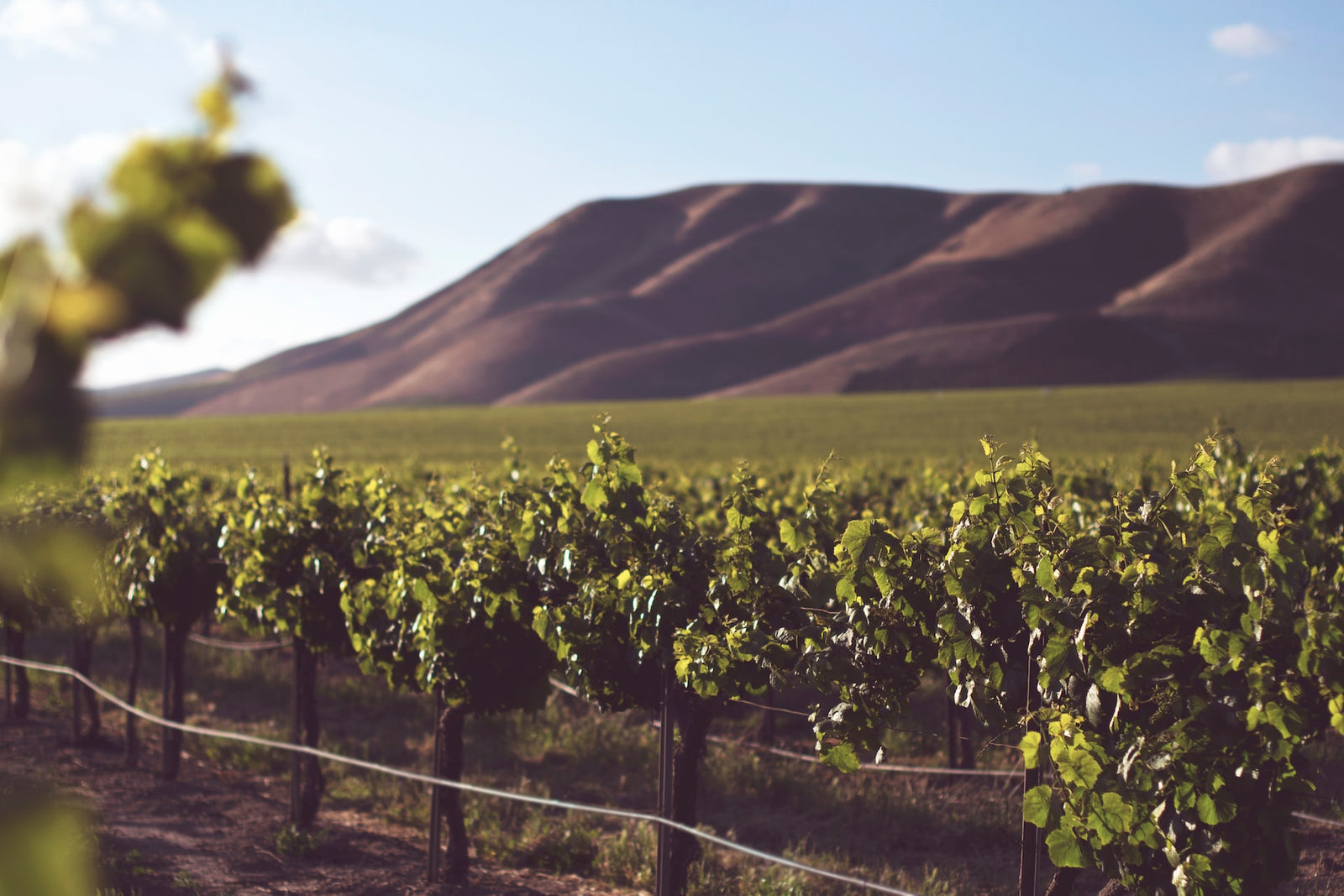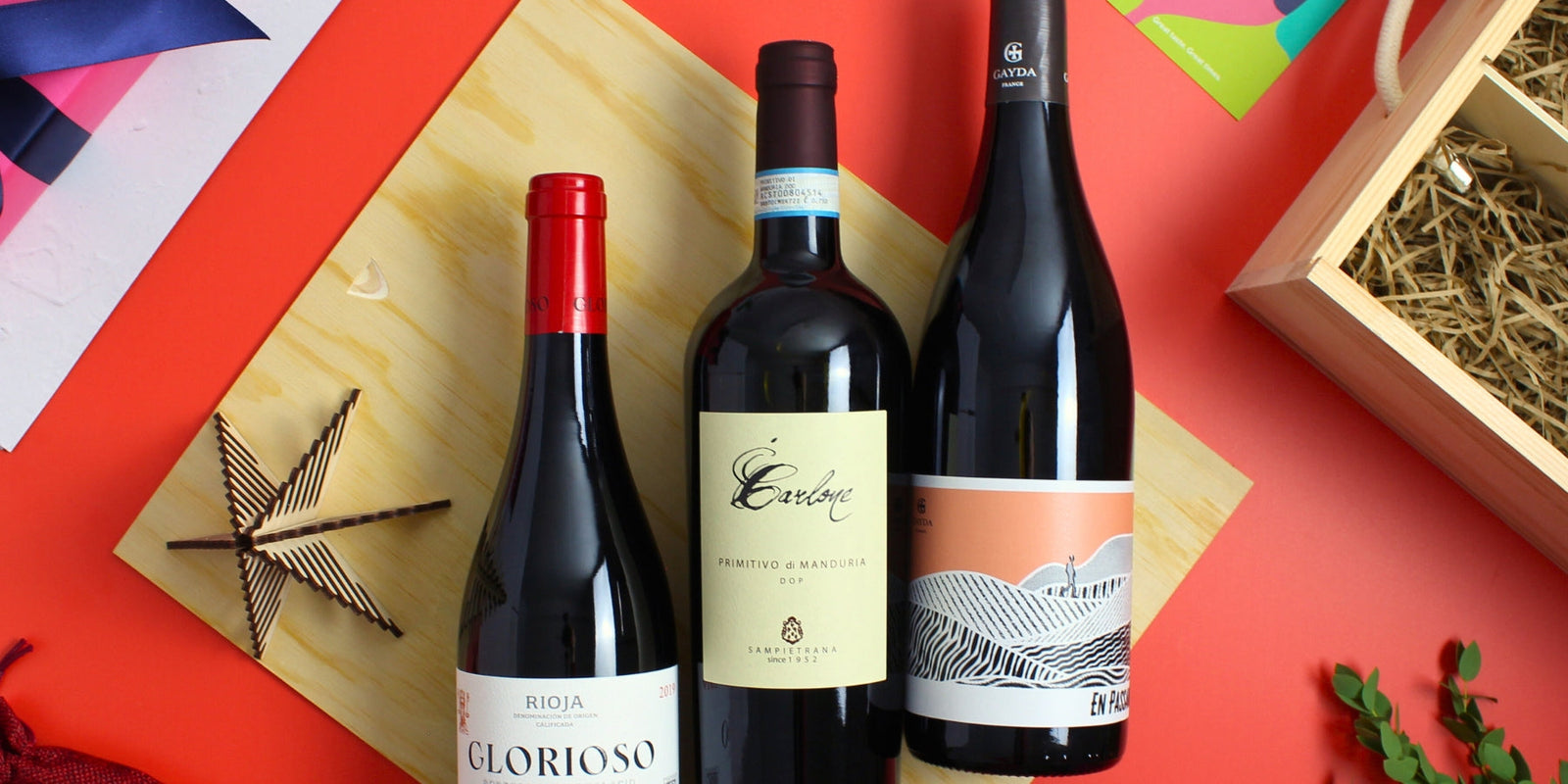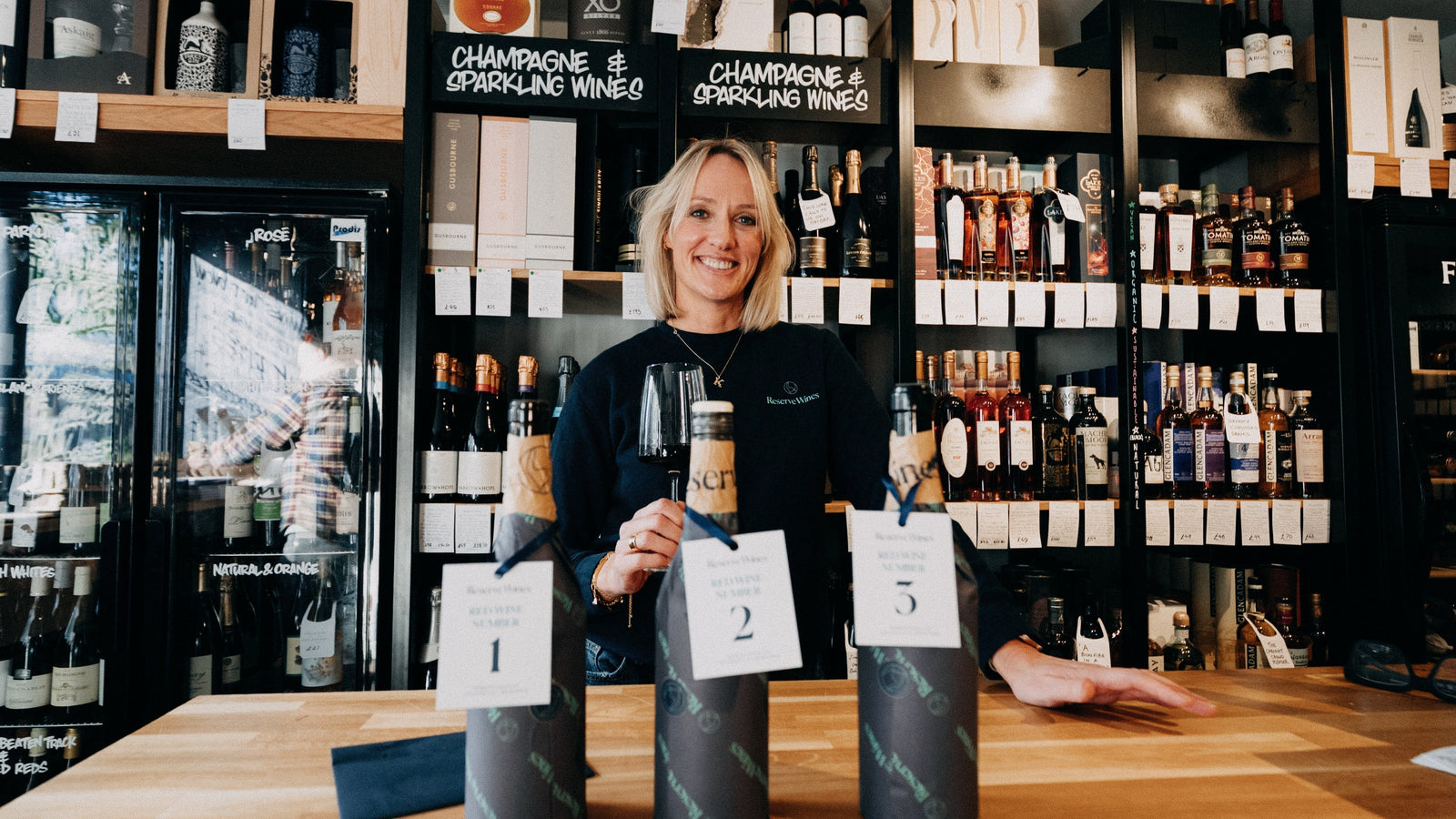Back to School - Wines of the New World
Welcome to the final instalment of our Back to School blog series. So far we have looked at France, Spain and Italy. These European countries are referred to as the 'Old World' and are where modern winemaking traditions originated.
Here we're going to be looking at the countries referred to in wine as the 'New World'. These are countries that borrowed from European winemaking before developing their own identity.
If there's one thing that stands out about the differences between Old and New World it is that Old World wine tends to be lighter in body, higher acidity, and has less sweet fruit flavour with more minerality. New World wine tends toward fuller body, high alcohol and pronounced fruit flavours.
Wines in the New World are far more likely to have the name of the grape prominently displayed on the label, which can make choosing wine a little easier.
Let's dive in and find out a little more.

USA
American winemaking is focused around California. 80% of their wine comes from here, and it is know for its big, bold, fruit forward wines made with Cabernet Sauvignon, Merlot and Chardonnay. The areas within California closer to the Pacific Ocean benefit from a cooling fog the suits varieties like Pinot Noir.
The top region in California is Napa Valley where Cabernet Sauvignon is the star. The wines here first gained worldwide acclaim at a famous wine competition in 1976 known as the Judgement of Paris, where Napa Cabernet and Chardonnay were tasted blind against French Bordeaux and Burgundy and the Napa wines were both judged the best. Since then, wine from this region has been very sought after and the area now has the highest land prices of any wine region in the world (and the wine prices to match.)
California's also known for areas like Sonoma, just 24 miles away from Napa which also produces big Cabernet blends, but you'll also find some Zinfandel. A little further south is Paso Robles which offers a cooler take on the big Californian style due to the influence of the Pacific ocean.
Other notable regions include the Willamette Valley in Oregon which makes some fine Pinot Noir, and Washington, where the cooler, wetter climate suits white varieties like Chardonnay and Riesling.
Key Grape Varieties:
Cabernet Sauvignon - The signature grape of California, often aged in new American oak barrels that give them big sweet vanilla boost. At their best, these wines offer lush black fruit flavours that unravel into layers of cedar, dusty minerality, and tobacco-laced tannins.
Chardonnay - The Californian style offers a richer body with flavours of pineapple and tropical fruits that are often complemented with toasty oak.
Zinfandel - The same grape as Italian Primitivo, Zinfandel can be found in the Califiornian regions of Sonoma and Lodi and bursts with sweet blackberry, plum sauce and five spice fruit. It can also be surprisingly dry with minerally tannins and high alcohol.

Where to start: Avalon, Zinfandel 2019
Dark berry and spicy notes entice the nose, while ripe plum, blackberry and a touch of blueberry flavours entertain the taste buds. Juicy and structured, Avalon Zinfandel is well balanced and has a long, velvety finish.

South Africa
South Africa has a long history of vineyards going back to the 1600s but it really made its mark on international drinkers from the 1980s onwards. It now boasts one of the most dynamic wine scenes in the world, driven by small independent winemakers untethered to tradition, creating exciting wines with a great emphasis on sustainability and fairtrade practices.
Nearly all the wine is produced in the Western Cape. The key areas are Stellenbosch, where ancient soils in plains beneath granite mountains offer the best sites, cooled by the ocean breeze from the Atlantic. The region is best known for producing full-bodied Cabernet Merlot blends and rich Chardonnays and Chenin Blancs, but also offers some good Syrah and Sauvignon Blanc.
There are cooler microclimates like in Elgin, which produces some fresh Sauvignon Blanc and Chardonnay. The hottest region is Paarl where you'll find very ripe, fruit-forward examples of Cabernet Sauvignon, Pinotage and Syrah.
Swartland is another notable region, where a focus on old bush vines and lesser known grapes like Cinsault makes for some of the country's most unique wines.
Key grape varieties:
Pinotage - A cross between Pinot Noir and Hermitage (South African term for Cinsault), this grape can have fruit flavours of strawberry and plum. It is often smoky with a slight tar note and makes juicy easy-drinking reds and richer full bodied wines, depending on how it is handled.
Chenin Blanc - a widely planted grape that is referred to as 'steen.' It produces wines with flavours of melon, lemon and some tropical hints and herby characters. It can be fresh and fruity or stand up to barrel-ageing, where it develops waxier, honeyed notes over time.

Where to start: False Bay, 'Slow' Chenin Blanc
Kate says "We love the wines made by the team at Waterkloof. Their False Bay Chenin shows you can get refreshing wine with a subtle savoury complexity at an affordable price. Brilliant with herby roast chicken."

Australia
Australia is country that is always innovating. It is a large country and each geographical area specializes in different wines, each with their own identity. Australian wine, like many other countries in this list, was introduced to many wine drinkers via their bigger commercial brands. They're now trying to focus more on the regional differences that make their wines stand out.
South Australia’s flagship region is Barossa Valley, a hot region with vines that are up to 100 years old (if a Barossa wine says old vines on the label it is guaranteed to be at least 35 years old.) Here there is a focus on Shiraz and and it makes some of the best examples of this variety in the world. They are very big bold, rich, alcoholic wines with flavours of blackberry, blueberry, chocolate and mocha. They are decadent and immediately pleasing wines that are easy to enjoy.
McLaren Vale is also home to some stand-out made wines using Shiraz and Grenache grapes. The coastal climate and high altitudes of some vineyards here give a diversity that suits a variety of grapes and you'll find Rhone style white blends using Viognier and Roussane along with the luscious reds.
Clare Valley is a high altitude region that produces some fantastic Riesling helped out by the limestone and slate soils that create mineral-driven wines with pure fruit.
In Victoria, there are many cooler regions making fruity Chardonnay and Pinot Noir in a slightly more restrained style than the rest of South Australia.
In Western Australia’s Margaret River, you’ll find a some excellent unoaked Chardonnay and elegant Bordeaux blends.
Key Grape Varieties
Shiraz - Very big, bold, rich wines with flavours of blackberry, blueberry, chocolate and mocha.
Cabernet Sauvignon - Coonawarra Cabernet has the classic blackcurrant and blackberry fruit, but also a note of eucalyptus or mint which makes them stand out. It is also used in elegant Bordeaux-style blends in the Margaret River.
Chardonnay - From the fresh unoaked styles of the Yarra Valley to the classy wines of the Margaret River, Chardonnay thrives here.
Semillon - here this grape creates wines with lemony fruit and a slight waxy character. They are often blended with Sauvignon Blanc but there are some great single varietal examples which can be surprisingly age-worthy too.

Where to start: One Chain, The Googly Chardonnay
A lovely, modern, fruit forward Chardonnay sourced from cooler climate vineyards to give a crisp, lively and bright freshness. This citrus scented Chardonnay has well balanced tropical fruit and melon on the palate and a nice bit of layered texture on the vibrant finish as a result of 2 months in French oak.

New Zealand
New Zealand wine is dominated by Marlborough Sauvignon Blanc. This combination of grape and place has been enormously popular in the last 20 years, particularly in the UK, and has really put New Zealand wine on the map. New Zealand also has an unparalleled commitment to sustainability
New Zealand Sauvignon Blanc is very distinctive with lots of passionfruit, gooseberry, grapefruit, guava and lime on the nose and palate along with more herbaceous and floral flavours of fresh-cut grass, bell pepper and tomato leaf.
While Sauvignon Blanc dominates, there are several other notable regions including Central Otago which is dry and sunny and produces some sublime Pinot Noir wines with sweet dark berry notes, supported by a gravelly minerality and clove-like spice.
Key grape varieties:
Sauvignon Blanc - Marlborough produces 90% of the Sauvignon Blanc grown in New Zealand and its recognizable style is tropical and juicy and very satisfying.
Pinot Noir - You'll find this in Marlborough too where it makes bright and fruity wines, but the best examples are from Central Otago and have a little more minerality and spice.

Where to start: Kono Sauvignon Blanc
This pure and bright Marlborough Sauvignon Blanc has a vibrant fruit-driven nose bursting with citrus fruits and herbaceous characters. On the palate luscious flavours of lemon zest and guava combine with notes of currant leaf and fresh bell pepper. Finely balanced with zesty acidity, underlying minerality and just a hint of residual sweetness, this crisp and fresh wine leads to a perfectly long, dry and persistent finish.

Chile
The narrow strip of land in South America between the Pacific Ocean and the Andes mountains is made up a variety of different micro climates and soils which enables it produce a wide variety of grapes.
Chile's signature variety is Carménère which was sold as Merlot until the 1990s, when it was found to be a nearly extinct unique grape variety. The best examples are found in and around Colchagua, Cachapoal and Maipo Valley, where wines are richer and more chocolatey.
Cabernet Sauvignon is the most widely planted grape variety, along with Chardonnay, Sauvignon Blanc and Merlot.
The range of cooler climate areas such as Limari Valley produce some wonderful grassy Sauvignon Blanc and Pinot Noir.
The high elevation Andes create wines with more structure (tannin and acidity) and produces some classy Cabernet Sauvignon and Merlot as well as Malbec, Syrah and Cabernet Franc.
Key grape variety:
Carménère: Carménère was once confused with Merlot, but is now known to be directly related to Cabernet Franc. It shares its red fruit flavours and herbaceousness.
Where to start: Indomita Nostros Carmenere
Intense, almost black, red colour. Aromas of red and black wild berries, truffle, paprika, pepper and clove. The round and silky body so characteristic of ripe Carménère offers a pleasant and full experience.

Argentina
Argentina produces a large quantity of wine. The majority of the vineyards are found at the foothills of the Andes. Mendoza is the largest region (it has 75% of Argentina's vineyards.)
Red wines and particularly Malbec are the focus here and the range of altitude creates a variety of styles. The areas with the highest altitude such as Maipú, Luján de Cuyo and Uco Valley are considered the top areas and the wines here are more refined and have higher acidity which adds freshness and ageability.
Mendoza Malbec is lush with lots of blackberry, black plum, cherry and cocoa flavours and has been a grape that fans of big reds wines have been enjoying more and more, making this a highly popular modern wine.
Malbec isn't the only grape in town though, and there is plenty of Cabernet Sauvignon made here which is equally worth your time.
White wine is made is much smaller quantities but there are some excellent Chardonnays in a creamy, oaky style and Torrontés offers an distinctive aromatic quality that can smell sweet but taste dry, with exotic flavours of lychee, peach, lemon and lime.
Key grape variety:
Malbec -The king of Mendoza, Malbec can have flavours ranging from red cherry to blackberry and boysenberry, depending on where it is grown. It is often lush and ripe and works very well aged in oak, which adds cedar, cocoa and spice.

Where to start: Kaiken, Malbec Clasico
"A staple in our range, it always stands out in blind tastings because it's smooth and velvety and just a really pleasing style of wine. Malbec is still super popular and it's down to wines like this."
We hope you've enjoyed reading along with us as we've explored a few of the basics of wine. Our hope is that is has left you with more questions that you want to find answers to and has sparked an interest that will lead you to some delicious places.
If you do want to ask us anything, please reach out at hello@reservewines.co.uk or ask any of our friendly staff if you're able to visit our shops.
It's now time to enjoy a glass a two, which brings us to one last topic...
The price of wine

With so much wine available, and much of it costing less than £7 (the average price of a bottle of wine in the UK is currently around £6) it can be easy to wonder why some wine is expensive and if it is really worth it. As ever, its complicated.
There are many factors that affect the price of wine. Some of them are to do with the cost of making the wine and some are fixed costs of packing and selling wine in the UK. Let's break it down.
The cost of the wine itself is down to where it is from and how it is made. It's economies of scale. Wine made from grapes sourced from large area that can be harvested and vinified with machines is going to cost less than a wine made with grapes from a small area where harvesting and sorting is all done by hand. Ageing a wine for a long time adds cost and demand drives prices up - if there's not enough to go around, it's going to cost more.
We pay a lot of tax on wine in UK. Excise Duty on wine is £2.23 per bottle. Then you still have to add 20% on in VAT. Then there's the cost of packaging, logistics and retailer margin. When buying a £5.00 bottle of wine in the UK, only 25p pays for the wine itself. If you spend £10 on a bottle, you get roughly £2.64-worth of wine, rising to £6.98 with a £20 bottle.
Not only do you get better quality for your money when you spend more, but this value also rises at a much faster rate with bottle price. When it comes to the £20 bottle of wine, despite it being four times the amount of a £5 bottle, quality of the wine increases nearly 23 times.
However, the fact that it's better quality wine is no guarantee that you will like it more (the more individual a wine is, the less it becomes a crowd pleaser.) But it is a better product and you'll have more chance of buying from wineries that operate more sustainably and ethically.






Leave a comment (all fields required)